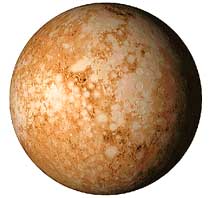DK Space: Pluto
This deep-frozen world of rock and ice was the last planet to be discovered—US astronomer Clyde Tombaugh spotted it in 1930. It is the smallest planet and usually the farthest from the Sun. It travels in a highly elliptical (oval) orbit that sometimes brings it closer to the Sun than Neptune.
Table 12. PLUTO DATA
| Diameter (width) at equator | 1,413 miles (2,274 km) |
| Average distance from Sun | 3.666 billion miles (5.9 billion km) |
| Time to orbit Sun | 247.7 years |
| Time to spin around own axis | 6.39 days |
| Mass | 0.002 x Earth’s mass |
| Gravity | 0.067 x Earth’s gravity |
| Average surface temperature | –369°F (–223°C) |
| Number of moons | 1 (Charon) |
Pluto is very small and unlike any other planet. Its surface is covered with frozen nitrogen and methane, which evaporate to form a slight atmosphere when Pluto is closest the Sun. Some astronomers think that it is not a true planet, but simply the largest body in the Kuiper Belt.
The ring of icy bodies found in the outer Solar System beyond Neptune is called the Kuiper Belt. Dozens of Kuiper Belt Objects (KBOs) have been detected using the world’s most powerful telescopes. Many KBOs end up circling closer to the Sun and become comets.

